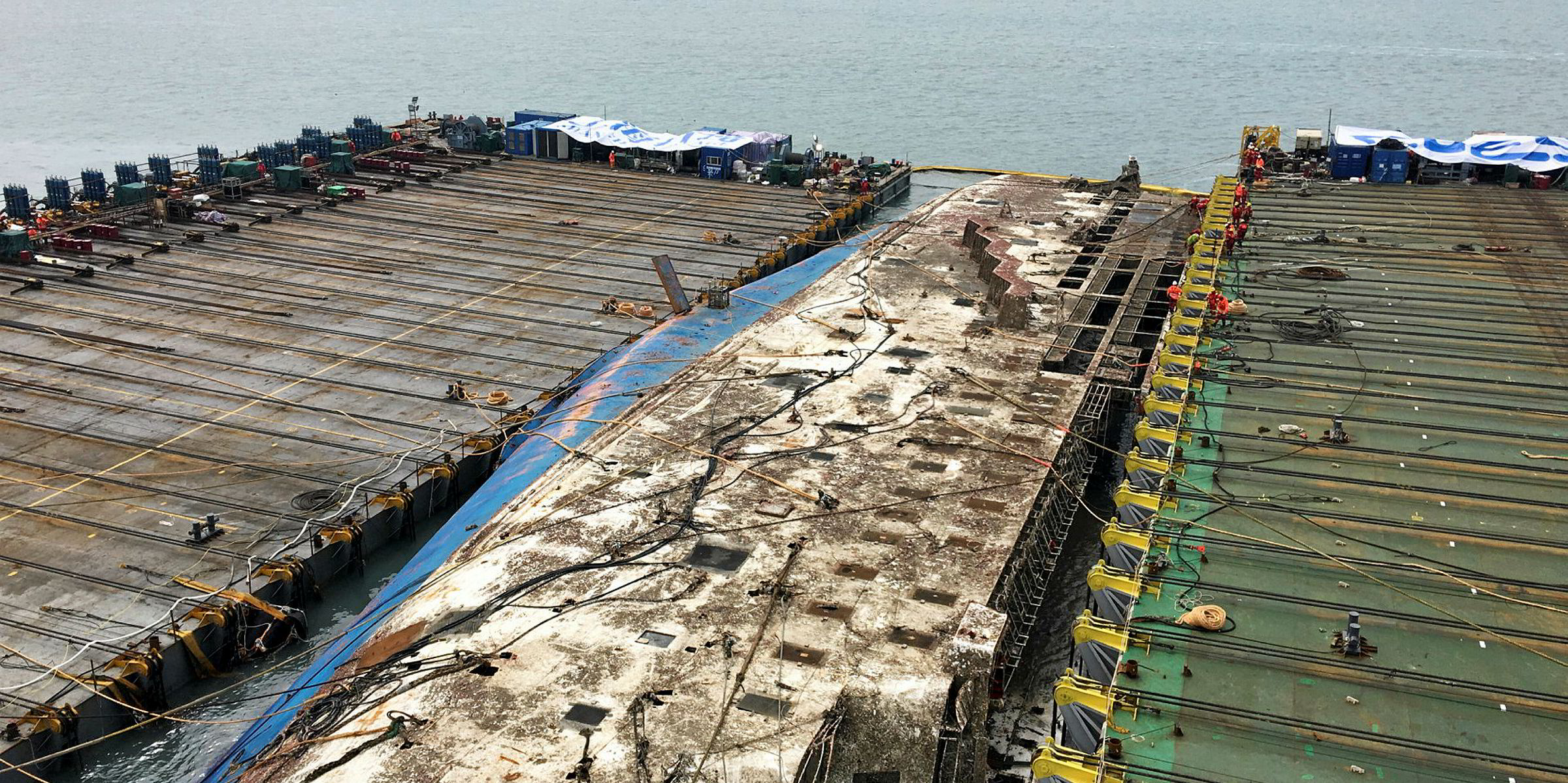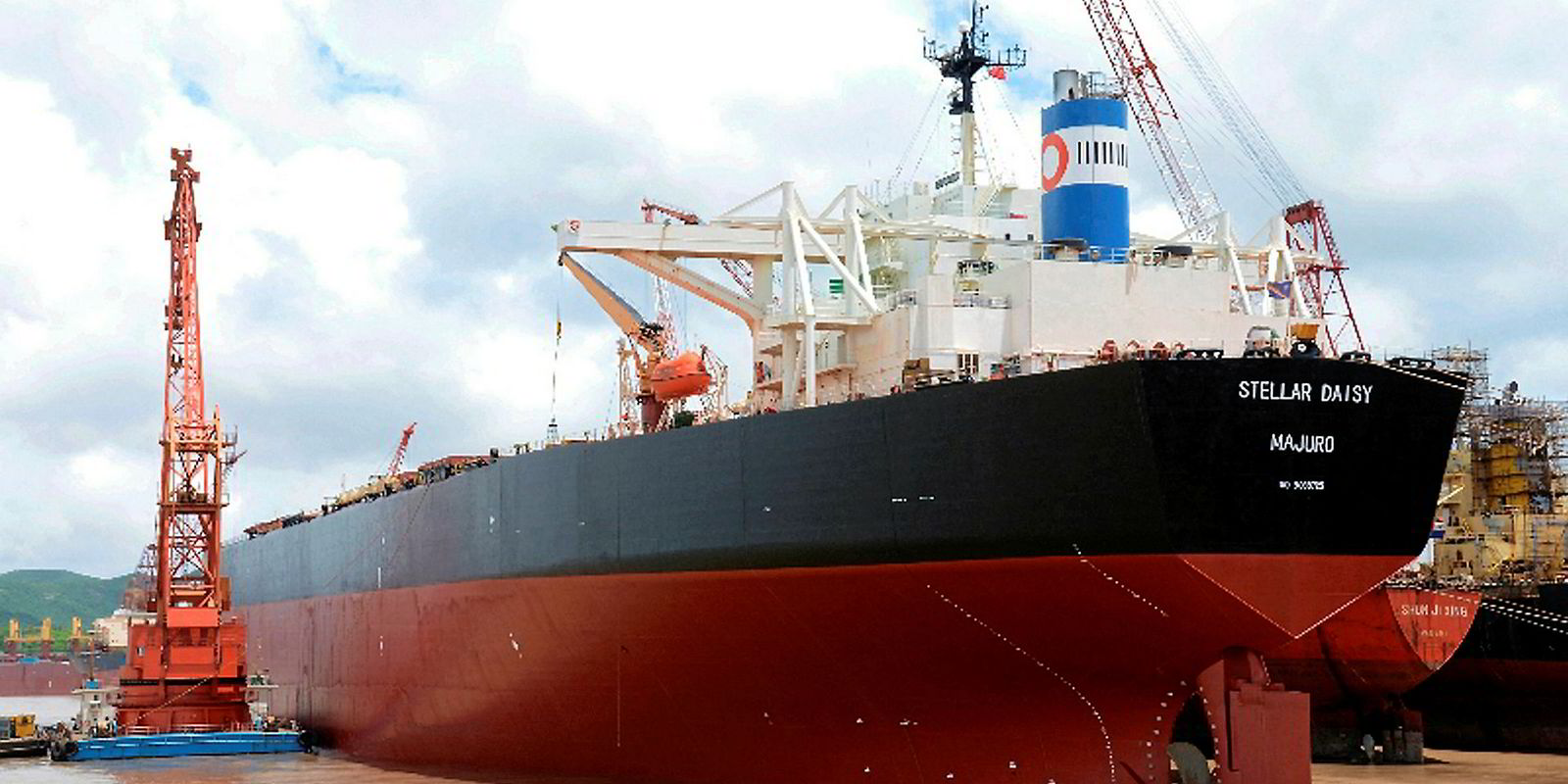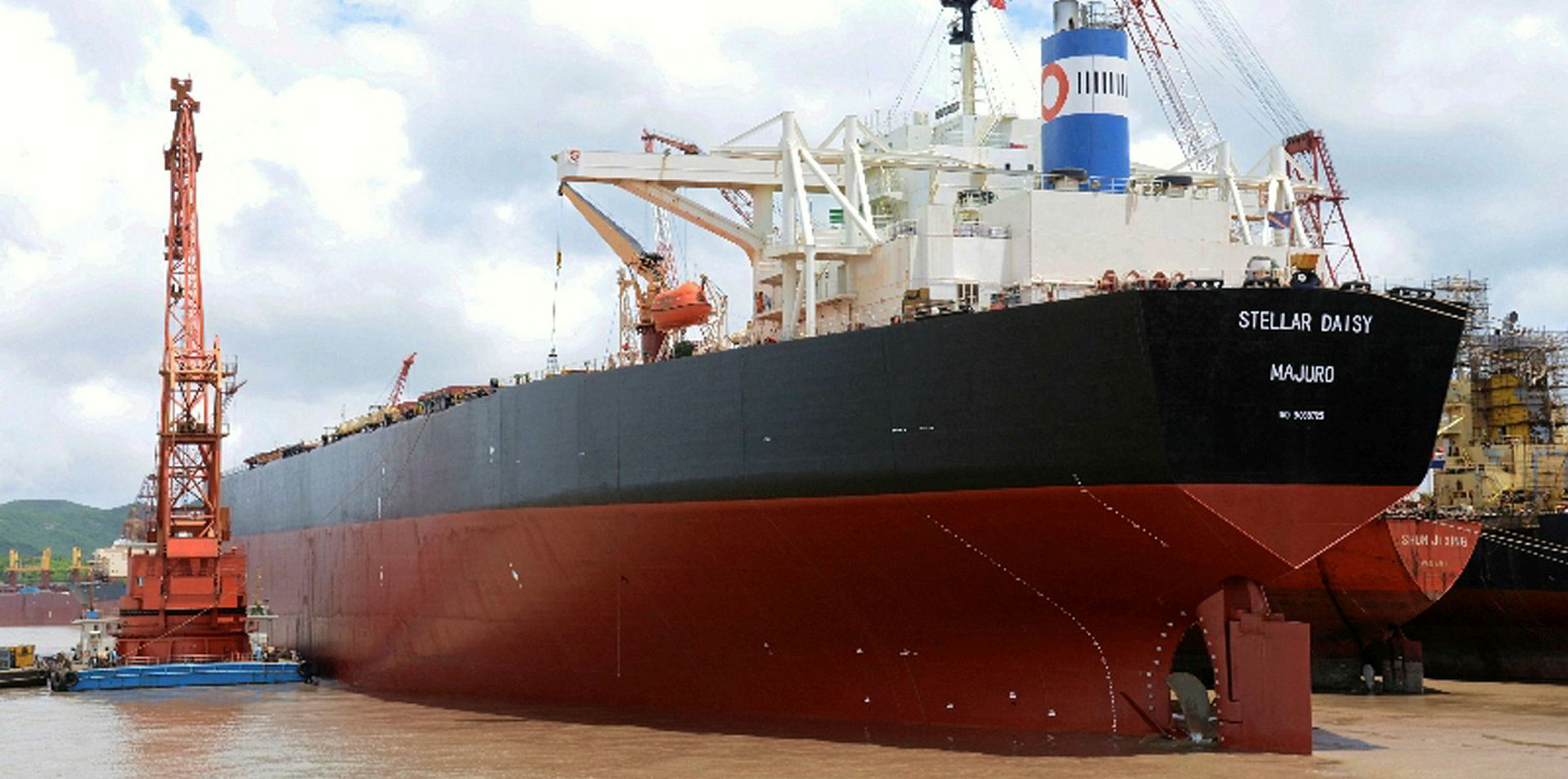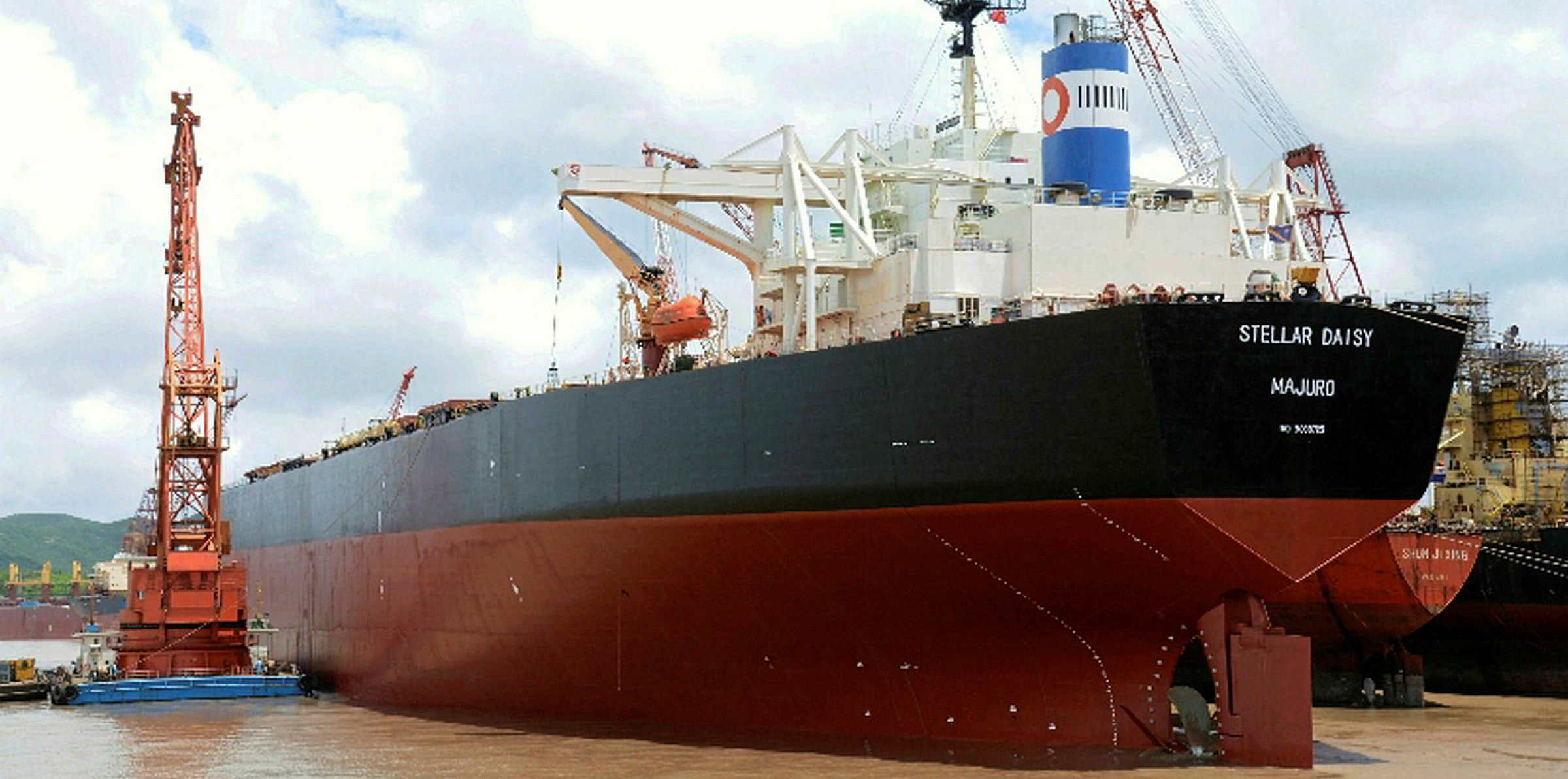A second underwater survey of the wreck of the ore carrier Stellar Daisy (built 1993) is being considered — this time to recover the bodies of missing seafarers.
According to sources familiar with the project, a proposal has been tabled for underwater survey company Ocean Infinity to launch a fresh search for the remains of the missing 22 seafarers at a cost of about $12m.
The call comes a month after the wreck was discovered at a depth of 3,700 metres, and almost two years after the 266,141-dwt converted VLCC sank without a trace in the South Atlantic in March 2017.
Grieving relatives
South Korean relatives of missing crew are understood to have requested the search to recover bodies. Eight of the missing 22 crew were South Korean nationals.
Hopes were raised that further bodies could be recovered after the remains of a missing crew member were discovered during the first underwater survey.
The original project to locate the wreck and its voyage data recorder (VDR) have cost the South Korean government some $5m, reportedly funded from the public purse.
Although the recovery of the VDR was widely applauded, as it was hoped it would shed some light on the loss, talk of another search has alarmed some in the insurance world.
Insurers are sympathetic to the families of missing crew but are privately concerned that a further search could set unrealistic expectations.
22 Number of seafarers lost in the Stellar Daisy disaster
$5m Cost of original underwater survey to recover the ship’s voyage date recorder
$12m Cost of proposed underwater survey to continue search for missing crew
40 Number of days the initial search exceeded
Many observers believe an unprecedented amount of time has already been spent looking for the Stellar Daisy crew.
Search and rescue
As reported by TradeWinds, the search and rescue operation following the vessel's loss continued for more than 40 days.
The operation ran well beyond the maximum two-week period typical of search and rescue operations, and in excess of the time crew could reasonably have been expected to survive in the Atlantic Ocean.
For more than a year after the tragedy, South Korean vessels operating in the area were instructed to keep a look out.
One South Korean source familiar with the case told TradeWinds: “It raises the question over whether this level of search and deployment of deepsea exploration equipment should be deployed in all sinking cases to this extent.
With enhanced underwater exploration technology and in recognition of human rights, in the future many shipowners and governments could face similar demands for unlimited searches at an unlimited cost
South Korean marine insurance manager
“If it is, then it will put an enormous pressure on shipowners and their liability insurers —the P&I [protection and indemnity] clubs.”
Raised expectations
Expectations for a fresh Stella Daisy search may have been raised by the success of a similar operation to find the missing passengers and crew of the ferry Sewol (built 1994), which sank off Pusan claiming the lives of 304 passengers and crew.
The ship sank in 2014 but the wreck was not raised and missing bodies were not recovered until four and a half years later. But unlike the Stellar Daisy, the Sewol sank at a shallow depth of 20 metres.
“This is not just an issue for South Korea and [vessel operator] Polaris,” a marine insurance manager in South Korea commented.
“With enhanced underwater exploration technology and in recognition of human rights, in the future many shipowners and governments could face similar demands for unlimited searches at an unlimited cost.”







